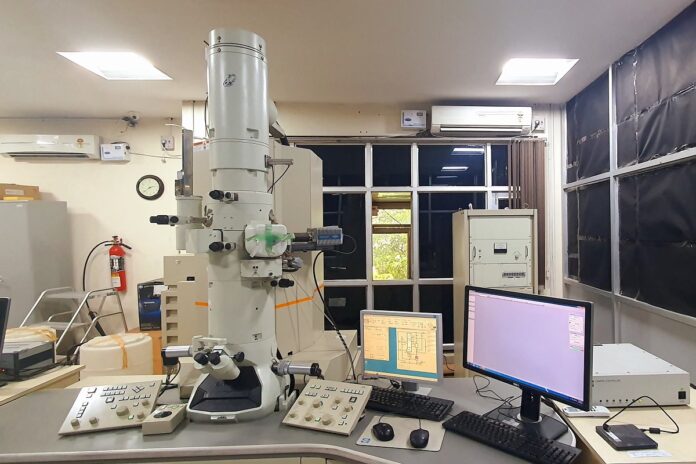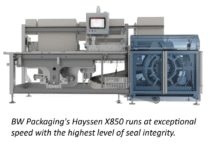
Fluorosis is a disease resulting from the deposition of fluorides in the hard and soft tissues of the body due to excess intake of fluoride through drinking water, food products, industrial pollutants over a long period. It results in dental fluorosis, skeletal fluorosis, and non-skeletal fluorosis. Early detection of fluorides in water can help to prevent the public health hazards.
Scientists from the Institute of Nano Science and Technology (INST), an autonomous institute of the Department of Science and Technology, Government of India, have developed an equipment-free fluoride ion detection and quantification in drinking water naked-eye. It can be operated by non-experts for household use to evade fluorosis-based disorders.

The technology developed by Dr Jayamurugan Govindasamy and his team involves a push-pull chromophore based on 2,3-disubstituted 1,1,4,4-tetracyano-1,3-butadienes (TCBDs) that changes color upon exposure to fluoride ion. The identified chromophore (C3-phenyl, C2-urea functionalized TCBD) is the result of a systematic study seeded by the Early Career Research (ECR) Award and further supported by the Ramanujan Fellowship grant of DST received by Dr Govindasamy. The results were recently published in the Journal of Organic Chemistry.
The researchers designed urea as an unusual donating moiety instead of traditional donor moieties, such as amines, to obtain better optoelectronic properties. The charge-transfer (CT) property that arises through-bond in aniline donor is usually quenched due to photoinduced electron transfer (PET) mechanism. Whereas upon introducing urea as an electron donor, the CT exhibited both spaces as well as through bond due to “Field-effect.” Thus, the partial overcoming of PET process, which led to white light emission.
Later, they extended their applicability in sensing biologically relevant fluoride, as it is well known that fluoride can bind with urea via H-bonding interaction. Thus the combination of the push-pull chromophore with urea turned out to be an ideal system for the same. The INST scientists have optimized the synthesis of this chromophore in the laboratory scale.
Furthermore, the design and synthesis can be slightly modulated to increase the sensitivity from 3 ppm to less than one ppm. Currently, the INST team is working in this direction. The major cost involves only the synthesis of the chromophore, making it affordable and accessible.
Currently available, commercial kits for F– detection need analytical methods, mainly spectrometers (mobile or static). Some colorimetric detection kits are available, but they have some handling issues like work only with pH<1 (use of HCl). The kit developed by the INST scientists’ scores above these in its ease of usage.
Patent filed for the invention
The invention has been protected by filing the patent (202011028595). DST-SERB supported this work through the Early Career Research Award and Ramanujan Fellowship to Dr Jayamurugan Govindasamy.
Several companies sell solution-based photometric as well as colorimetric sensor kit, including few Indian companies. However, the institute claims that there is no single product based on low-cost paper-strip available to bring down the kit’s cost and easy handling by the layman.
One German company currently sells a paper-strip test kit for detecting HF with the sensitivity of up to 20 ppm that, too works only with hydrochloric acid (pH<1). This kit developed by INST can be used by a non-expert, with high sensitivity up to 3 ppm in aqueous or DMSO 1:1 condition and with only DMSO up to one ppm and free of dangerous chemicals and equipment.
IndiFoodBev — authentic, impactful and influential
An English-language food and beverage processing and packaging industry B2B platform in print and web, IndiFoodBev is in its third year of publication. It is said that the Indian food and beverage industries represent approximately US$ 900 billion in revenues which implies more than 20% of the country’s GDP. Eliminating the wastage on the farmside can help to deliver more protein to a higher number of the population apart from generating sizable exports. The savings in soil, seeds, water, fertilizer, energy and ultimately food and nutrition could be the most immense contribution that country is poised to make to the moderation of climate change.
To improve your marketing and grow sales to the food and beverage processing and packaging industry, talk to us. Our research and consulting company IppStar [www.ippstar.org] can assess your potential and addressable markets in light of the competition. We can discuss marketing, communication, and sales strategies for market entry and growth.
Suppliers and service providers with a strategy and budget for targeted marketing can discuss using our hybrid print, web, video, and social media channels to create brand recognition linked to market relevance. Our technical writers are ready to meet you and your customers for content.
The second largest producer of fruit and vegetables in the world is continuously expanding processing capacities and delivery systems with appropriate innovative technologies. We cover product and consumer trends, nutrition, processing, research, equipment and packaging from farm to thali. Get our 2025 media kit and recalibrate your role in this dynamic market. Enhance your visibility and relevance to existing markets and turn potential customers into conversations. Ask for a sample copy of our bi-monthly in print or our weekly IndiFoodBev eZine each Wednesday.
For editorial info@ippgroup.in — for advertisement ads1@ippgroup.in and for subscriptions subscription@ippgroup.in
Naresh Khanna – 10 February 2025
Subscribe Now











